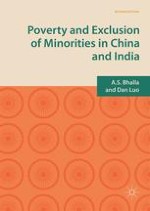2017 | OriginalPaper | Buchkapitel
4. Inequalities and Access
verfasst von : A. S. Bhalla, Dan Luo
Erschienen in: Poverty and Exclusion of Minorities in China and India
Aktivieren Sie unsere intelligente Suche, um passende Fachinhalte oder Patente zu finden.
Wählen Sie Textabschnitte aus um mit Künstlicher Intelligenz passenden Patente zu finden. powered by
Markieren Sie Textabschnitte, um KI-gestützt weitere passende Inhalte zu finden. powered by
